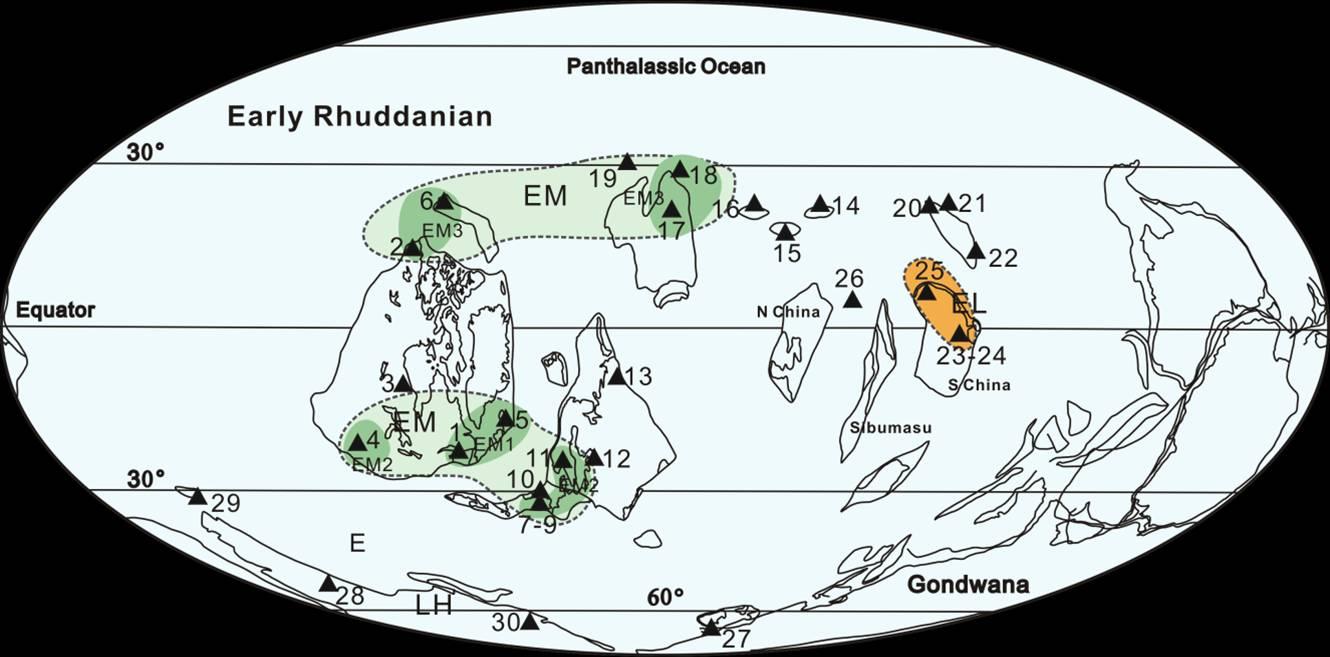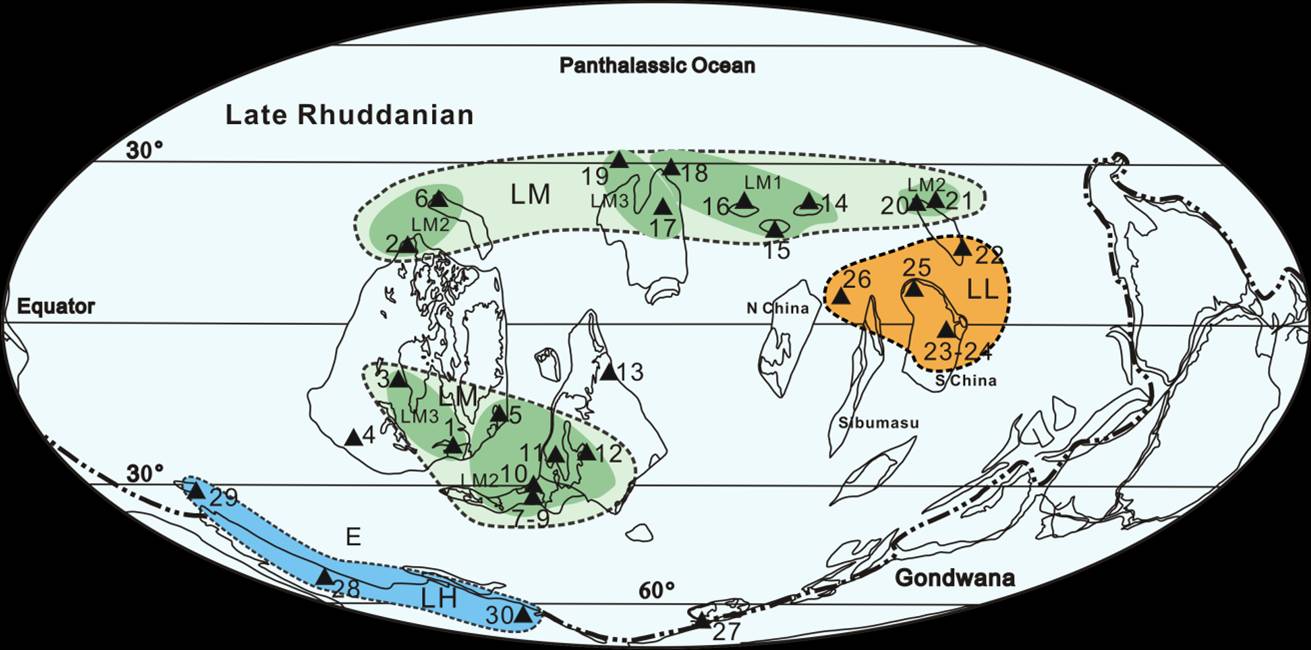

Mass extinction can severely disturb not only the global ecosystem and its ecological foundation, but also the palaeobiogeographical framework severely. Research on palaeobiogeography of the survival and recovery intervals is significant in understanding macro-evolutionary processes after mass extinction.
Dr. HUANG Bing and Prof. RONG Jiayu from Nanjing Institute of Geology and Palaeontology, Chinese Academy of Sciences (NIGPAS), with Prof. Robin Cocks (Natural History Museum, UK), have recently published a study in the journal Palaeogeography, Palaeoclimatology, Palaeoecology. The paper summarized and revised published information on the recovery of early and late Rhuddanian brachiopod faunas. The global dataset consists of 137 occurrences, 72 genera, and 13 localities of Early Rhuddanian (survival interval), and 271 occurrences, 91 genera, and 26 localities of the late Rhuddanian (early recovery interval). The data are analyzed using cluster analysis, nonmetric multidimensional scaling, and minimum spanning tree. The results display palaeolatitudinal distribution patterns for brachiopods during their survival and recovery. Frequency analysis of the data indicates that cosmopolitan taxa before the mass extinction decreased in their post-extinction distribution. The survivors were mostly confined to one palaeoplate or even one locality in the survival interval, but expanded progressively in the subsequent recovery period.
Paper reference: Huang Bing; Rong Jiayu; Cocks L. Robin M. 2012. Global palaeobiogeographical patterns in brachiopods from survival to recovery after the end-Ordovician mass extinction. Palaeogeography, Palaeoclimatology, Palaeoecology, Volume 317, 196-205.
Download:
